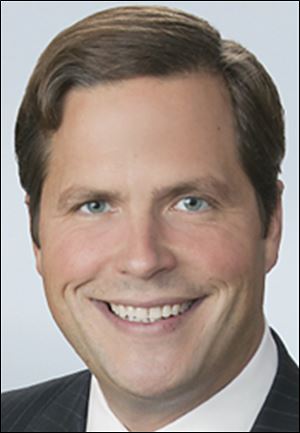
GUEST COLUMN
Issue 2 is the wrong way to draw political maps
11/4/2012
Wagoner
Ohioans have a long history of electing the people who make major political decisions on our behalf. That encourages public accountability: If we do not like the decisions, we can elect new people to office.
Issue 2 on Tuesday’s ballot violates that basic tradition. Although we need to reform the way we draw our congressional and legislative districts, approval of Issue 2 would be a step backward.
Redistricting occurs every 10 years after the U.S. Census. In Ohio, the state Apportionment Board — the governor, the state auditor, the secretary of state, and two legislative leaders — draws legislative districts. The General Assembly draws U.S. House districts. All of these officials are popularly elected.
My party drew the current maps. I think they are flawed. Political maps are the product of the redistricting process. If you focus on a better process — adding accountability and transparency, and forcing bipartisan compromise — you will get more fairly drawn districts. Issue 2 includes none of these ingredients.
As a state lawmaker, I have supported several redistricting reform proposals. One would have eliminated single-party control of the redistricting process and required bipartisan compromise. Because neither Democrats nor Republicans would have had an advantage in drawing legislative lines, districts would be evenly balanced and decision makers would be accountable to voters.
By contrast, Issue 2 would remove elected representatives from the redistricting process. It would substitute an unelected commission and create a permanent new government bureaucracy that, by design, would be unaccountable to Ohioans.
Worse, Issue 2 would unwisely draw Ohio’s judges into a highly charged political process. The prospect of politicizing the judiciary has caused the nonpartisan Ohio State Bar Association and Ohio Judicial Conference to oppose Issue 2.
The argument by supporters that Issue 2 will remove politics from the redistricting process is naïve. It would simply change the focus of the politics to the appellate court judges who would appoint the members of the redistricting commission. That would place enormous new pressure on these judges.
The members of the commission, by virtue of their appointment, will become politicians who can broker their power in ways that may not be in the best interest of our state. Yet they will never face Ohio voters.
Some people may think that, as an elected official, I have ulterior motives in opposing Issue 2. Yet I am not running for re-election this year, and I may never seek public office again.
One of the great regrets of my time in the General Assembly is that we did not enact meaningful redistricting reform. But Issue 2 would not improve redistricting. It would make the process even worse — if that’s possible — and would compromise the independence of Ohio’s judiciary.
Although work on bipartisan redistricting reform must continue, Issue 2 deserves a no vote.
Republican Mark Wagoner of Ottawa Hills represents District 2 in the Ohio Senate.